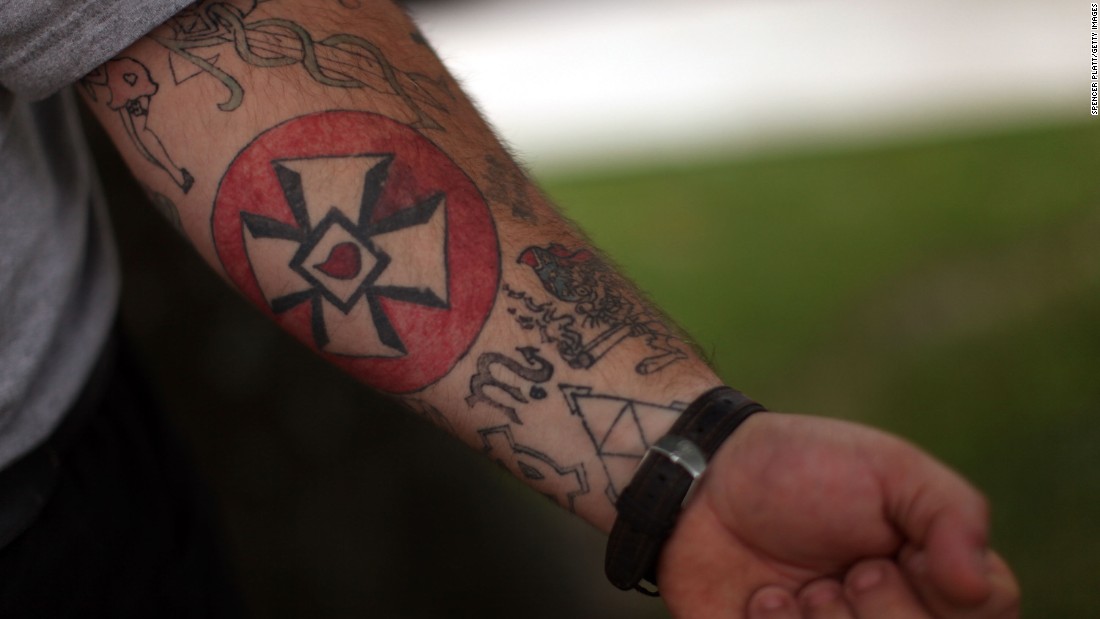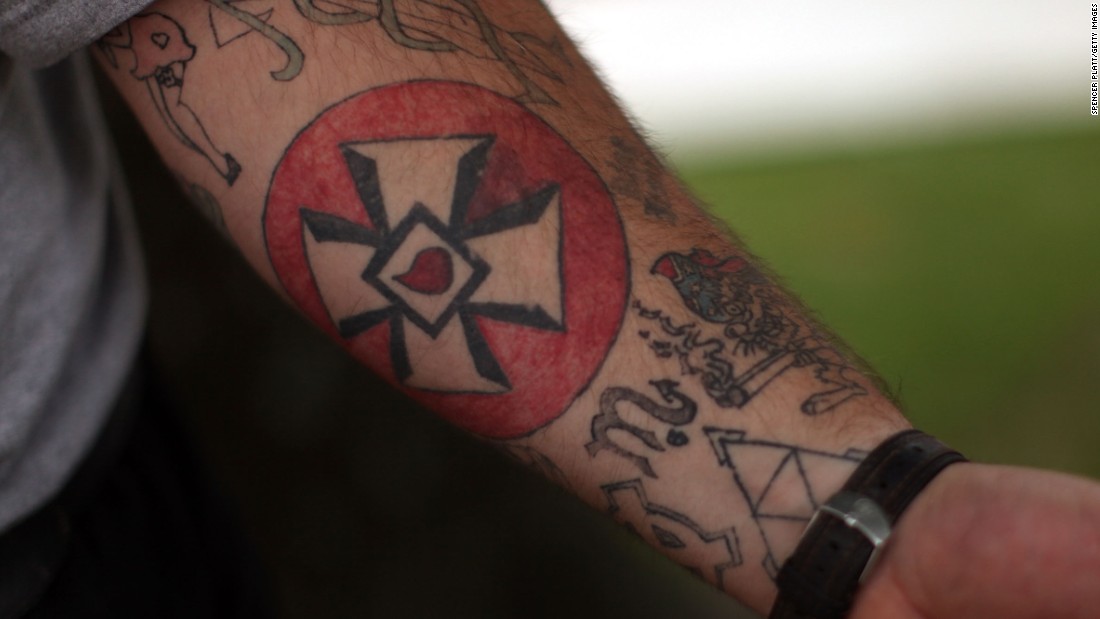[ad_1]

This is how the use of hate symbols is evolving, and how people hide them in plain sight.
According to the ADL, the symbol was first created as a hoax or meme among alt-right groups, who wanted other people and the media to get upset about it and thus look foolish condemning an innocuous symbol. Why the “OK? sign? The general idea is that the looped and extended fingers resemble the letters W and P, standing for “white power.”
Like other symbols in this article, a lot of what determines whether the “OK” sign is a hate symbol is the context in which it is used.
The new swastika
“The Nazis have such brand name power that they are going to be dominating white supremacist symbology for a century to come,” he says.
As a replacement, the NSM chose the Othala Rune, an pre-Roman symbol co-opted by Nazi Germany.
The rune, an innocent symbol outside of its appropriation by white supremacists, is related to ideas of “homeland” and “inheritance.” It is also rooted in Germanic and pagan Viking cultures, two things that white supremacists love.
“The Nazis believed that Scandinavians were pure Aryans, just like Germans were,” Pitcavage says.
While Othala runes are on their way in, other time-tested symbols are on their way out.
The iron cross used to be a widely-used hate symbol that harkened back to the Nazi era, but lost its potency in the ’90s and early 2000s when surf, skate and motorcycle companies started using similar-looking images in their branding.
The old favorites, reimagined
People who employ hate symbols typically want their ideologies known, but not so much that they’ll be criticized or shunned. It presents an interesting creative challenge.
Pitcavage breaks it down:
Still, most people seek what Pitcavage calls a “controlled display:” A swastika on their back that’s only visible when they take off their shirt; or a tattoo on the inside of the lower lip.
But, sometimes, followers of hate groups will obscure symbols altogether, so they only make sense to people that have similar ideological literacy.
“One thing I see every once in a while is a 1488 represented with a pair of dice,” Pitcavage says.
1488 is a combination of two numerical ideas: The 14 refers to the “14 Words” of a popular white supremacist slogan, and “88” refers to “Heil Hitler” (H is the 8th letter in the alphabet).
The Nazis don’t have the market cornered on hypervisible hate symbols, though. There’s also the KKK.
One of its most ubiquitous symbols is a so-called ‘blood drop cross“: a square cross with what appears to be a drop of blood in the middle. If you take away the cross and just leave the drop, it becomes a much more subtle symbol.
“Because it is a universal Klan symbol, people would notice,” he continues. “At some point, somebody thought of the idea of caps and paraphernalia that just have a blood drop sign on them. The average person probably would not notice, but another white supremacist would.”
The violent consequences
It’s one thing to ink oneself up with symbols; it’s quite another to, as Pitcavage pointed out, use these symbols as a form of intimidation. The reactions and themes they conjure are immediate and unequivocal: The swastikas or nooses or burning crosses and white hoods, the numerology and coded languages that lend an imagined significance to bald-faced brutality.
- In 2004, Sean Michael Gillespie was arrested for trying to firebomb an Oklahoma synagogue. It was reported he wanted to commit 14 terrorist acts — like the symbolic number 14. He also had internet handles featuring the number 88.
- In 2008, two men were accused of plotting to assassinate President Barack Obama. It was discovered they were planning on killing 88 black people, including schoolchildren. Of the victims, they wanted to behead 14.
- In 2015, Dylann Roof took 88 bullets with him into the Charleston, South Carolina, church where he killed nine people in 2015. “He was certainly familiar with the concept of 88,” Pitcavage says.
The cultural weight
“People know it will attract attention,” he says. “I always consider three things: If you see someone spray paint KKK, it’s not the Klan. If you see someone spray paint 666, it’s probably not a Satanist, and if you see someone spray paint a swastika, it’s not a Nazi.”
Of course, that doesn’t lessen the emotional and cultural harm these symbols can cause.
If anything, it makes them more dangerous because people use them without fully considering their damaging and deadly implications.
It is an interesting distortion of a hateful tradition in which devotees try desperately to control the message — to conveniently hide their beliefs under hidden lip tattoos and white hoods (and online anonymity) while perpetuating symbols and messages that, like a virus, don’t need a specific host to cause harm.
They do so by just existing.
[ad_2]
Source link

